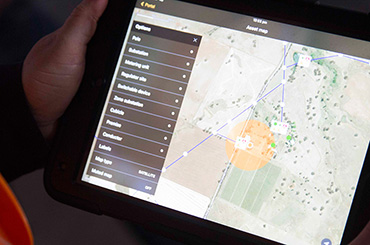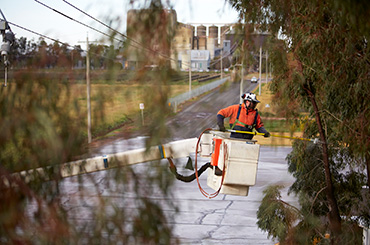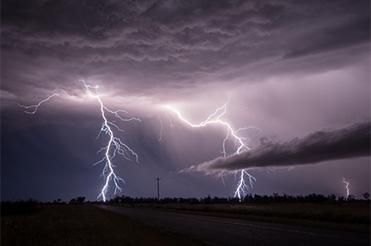
Given the scale and diversity of our electricity network, drone technology is an efficient and cost-effective, efficient and safe alternative to the regular ground-based and aerial inspections we undertake as part of our extensive maintenance program.
Drone technology allows us to assess the condition of network assets in a safer manner, and dramatically reduces the time needed to complete inspections. This helps us to deliver a safe and reliable network more efficiently, ultimately benefiting customers by contributing to lower network charges.
How we use drones
In 2016 we secured a Civil Aviation Safety Authority (CASA) licence and commenced a trail to assess the viability of drone use in a utilities environment. The trial was so successful that we've expanded our fleet of drones to 35 and expect to grow this to more than 100 in the future. This has created exciting new career opportunities for our employees. To date, three of our employees have been trained in a Certificate 3 in Aviation (Remote Pilot –Visual Line of Sight). We currently use the DJI Phantom 4 PRO (which weighs under 2kg, has a 20MP camera and contains avoidance sensors) successfully in a number of areas across the business:
- Aerial photography in urban environments where fixed aircraft can’t be used. This allows for an optimised condition assessment of all our overhead assets.
- Inspection of communication towers where previously technicians needed to climb well over 40 metres high. A drone was recently used to inspect a 90-metre tower in Moree, mitigating the risks for our employees associated with climbing these heights.
- Providing photographs for review and optimisation of potential defect rectification work required. This allows informed decisions to be made by the business to invest in key areas.
- Inspecting poles in areas that are inaccessible by vehicle. The drones bird’s-eye view reduces the need for inspectors to use climbing techniques or get elevated work platforms into these areas.
- First response after bushfires and flood affected areas before ground crews are granted access.
- Inspecting vegetation encroaching on our network in hard to reach areas.
- Conductor restringing. The use of a release mechanism mounted to the underside of the drone enables a small rope to be flown across rivers and gorges where previously helicopters were used at a great expense. The small rope acts as a feeder rope to pull the conductor across.
With the use of photogrammetry (using photos in mapping and surveying to take measurements) and drones, we have been able to produce even the largest and most challenging 3D models of Zone Substations and Network Assets, from simple photographs taken at different heights, in different photo sequences, and at different resolutions. These models help us to easily and quickly provide context for design, construction, and operations decisions. These same 3D models can also be used for training and greater access to information in a Virtual Reality (VR) and Augmented Reality (AR) environment.
The future of drones at Essential Energy
The use of the new drone technology within our business has excited our employees and encouraged organic thinking and growth of all new technologies for future use. We are applying to CASA for a Remote Operating Certificate (ReOC) to use larger drones greater than 2kg in weight. These larger drones have capabilities such as dual gimbals which will enable our employees to complete two inspections in the same flight. They will also provide a snapshot of the internal condition of conductors, connections and zone substations by using thermal imaging and Light Detection and Ranging (LiDAR) technology mounted on drones.



